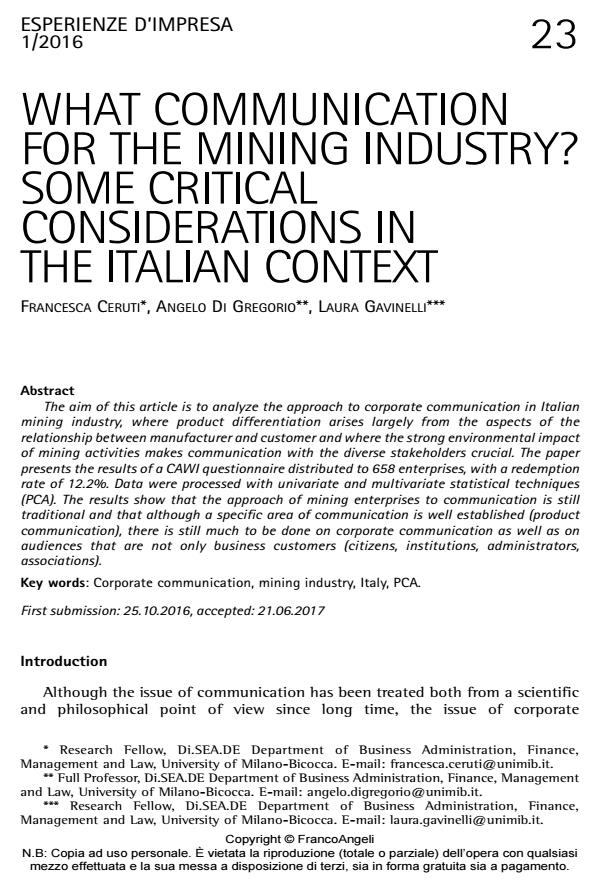What communication for the mining industry? Some critical considerations in the italian context
Titolo Rivista ESPERIENZE D'IMPRESA
Autori/Curatori Francesca Ceruti, Angelo Di Gregorio, Laura Gavinelli
Anno di pubblicazione 2018 Fascicolo 2016/1
Lingua Inglese Numero pagine 18 P. 23-40 Dimensione file 211 KB
DOI 10.3280/EI2016-001002
Il DOI è il codice a barre della proprietà intellettuale: per saperne di più
clicca qui
Qui sotto puoi vedere in anteprima la prima pagina di questo articolo.
Se questo articolo ti interessa, lo puoi acquistare (e scaricare in formato pdf) seguendo le facili indicazioni per acquistare il download credit. Acquista Download Credits per scaricare questo Articolo in formato PDF

FrancoAngeli è membro della Publishers International Linking Association, Inc (PILA)associazione indipendente e non profit per facilitare (attraverso i servizi tecnologici implementati da CrossRef.org) l’accesso degli studiosi ai contenuti digitali nelle pubblicazioni professionali e scientifiche
The aim of this article is to analyze the approach to corporate communication in Italian mining industry, where product differentiation arises largely from the aspects of the relationship between manufacturer and customer and where the strong environmental impact of mining activities makes communication with the diverse stakeholders crucial. The paper presents the results of a CAWI questionnaire distributed to 658 enterprises, with a redemption rate of 12.2%. Data were processed with univariate and multivariate statistical techniques (PCA). The results show that the approach of mining enterprises to communication is still traditional and that although a specific area of communication is well established (product communication), there is still much to be done on corporate communication as well as on audiences that are not only business customers (citizens, institutions, administrators, associations).
Parole chiave:Corporate communication, mining industry, Italy, PCA.
Francesca Ceruti, Angelo Di Gregorio, Laura Gavinelli, What communication for the mining industry? Some critical considerations in the italian context in "ESPERIENZE D'IMPRESA" 1/2016, pp 23-40, DOI: 10.3280/EI2016-001002